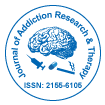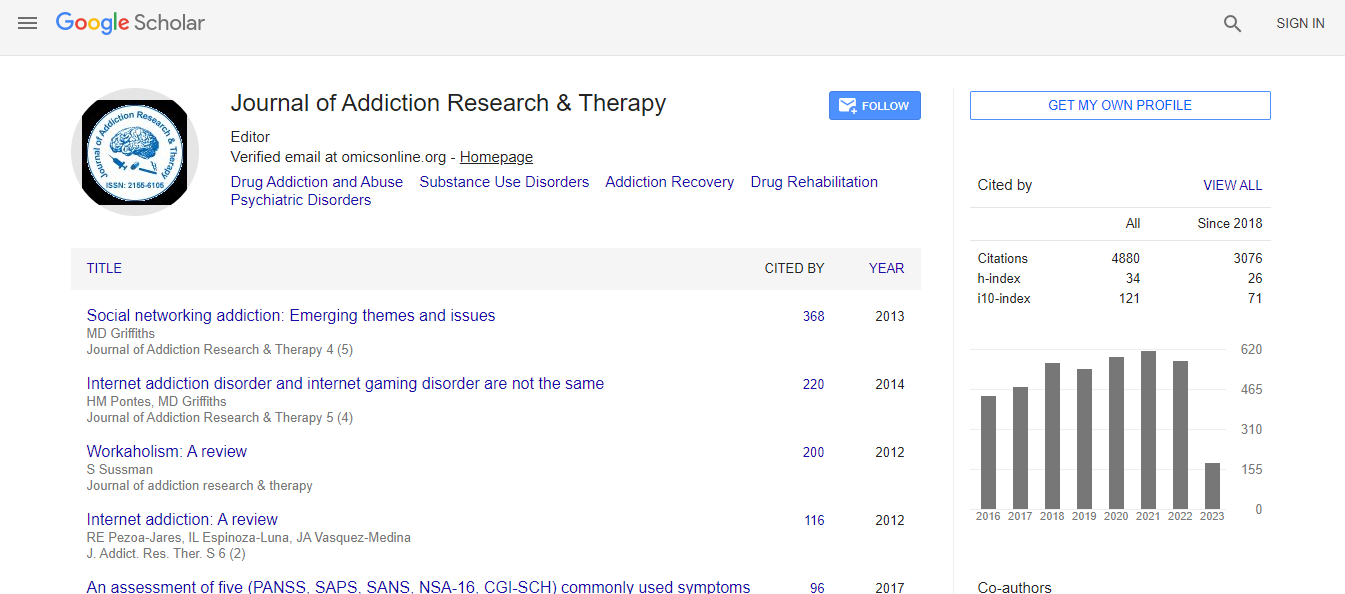Our Group organises 3000+ Global Conferenceseries Events every year across USA, Europe & Asia with support from 1000 more scientific Societies and Publishes 700+ Open Access Journals which contains over 50000 eminent personalities, reputed scientists as editorial board members.
Open Access Journals gaining more Readers and Citations
700 Journals and 15,000,000 Readers Each Journal is getting 25,000+ Readers
Google Scholar citation report
Citations : 4859
Journal of Addiction Research & Therapy received 4859 citations as per Google Scholar report
Journal of Addiction Research & Therapy peer review process verified at publons
Indexed In
- CAS Source Index (CASSI)
- Index Copernicus
- Google Scholar
- Sherpa Romeo
- Open J Gate
- Genamics JournalSeek
- Academic Keys
- JournalTOCs
- SafetyLit
- China National Knowledge Infrastructure (CNKI)
- Electronic Journals Library
- RefSeek
- Hamdard University
- EBSCO A-Z
- OCLC- WorldCat
- SWB online catalog
- Virtual Library of Biology (vifabio)
- Publons
- Geneva Foundation for Medical Education and Research
- Euro Pub
- ICMJE
Useful Links
Recommended Journals
Related Subjects
Share This Page
Addiction Treatment
8th International Conference on Addiction Psychiatry
Raymond V Tamasi
USA
Posters & Accepted Abstracts: J Addict Res Ther
Abstract
Addiction is a chronic health condition that affects 40 percent of the American public. It costs society more than $400 billion annually (excluding nicotine), is responsible for up to 45% of all hospital emergency room admissions and is implicated in 66% of incarcerations [1,2]. Of the estimated 23-25 million people who need addiction treatment, about 2.5 million (10%) receive it [3]. Stigma, insurance barriers, and the perception by many that they don’t have a problem have limited access to care. Efforts to reduce stigma in the United States through awareness programs, the 2008 Mental Health and Addiction Parity Act, and the influx of newly insured patients through the ACA (Obamacare) have sparked new interest and led to rapid growth of inpatient rehabilitation programs. However, despite wider acceptance of addiction as a chronic brain disorder, treatment continues to be developed and defined by an emphasis on acute, time-limited treatments. Addiction treatment has been defined and judged by this misplaced perception that a fixed duration of treatment will “fix the problem”. This fragmented approach fails to provide the life-long management necessary to ensure sustained remission and it results in high rates of relapse and readmissions to acute care. Greatly underemphasized is the absence of substantial and comprehensive community based continuing care and the paucity of prevention, early identification and intervention efforts. The absence of comprehensive follow-up care, prevention and early intervention contradicts the standard treatment of chronic disease. New ideas, innovative service delivery methods, the use of addiction medications, alternative clinical interventions, and technological supports need to be developed, tested, and utilized. This presentation will describe an approach that incorporates prevention, early intervention, and extended engagement with traditional models of care to create seamless, integrated care that that can produce more favorable long term outcomes.Biography
E-mail: rtamasi@gosnold.org

 Spanish
Spanish  Chinese
Chinese  Russian
Russian  German
German  French
French  Japanese
Japanese  Portuguese
Portuguese  Hindi
Hindi 
